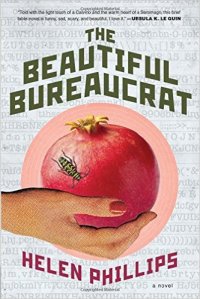I’ve been tearing through books in the last few days waiting for this baby to arrive: We Love You, Charlie Freeman by Kaitlyn Greenidge, For Today I am a Boy by Kim Fu, and Mr. Splitfoot by Samantha Hunt. I really liked all of them, but want to start with Mr. Splitfoot.
I’ve read the last three chapters of Mr. Splitfoot three times now, not because I needed to in order to understand them, but because they contain so much magic that I want to absorb more and more of it. The novel alternates between the first person perspective of present-day Cora and the third-person perspective of Cora’s aunt, only six years her senior, Ruth. Ruth, who grew up in an upstate group foster home run by a religious fanatic, became something of a spiritualist with her “sister,” a boy from the home named Nat, and under the guidance of a strange man named Mr. Bell, took their show on the road. Years later, she arrives at a pregnant Cora’s door, unwilling to speak, and urges her along on a cross-state journey, on foot, destination unknown. The writing is some of the sharpest and most specific I’ve read. The way Hunt weaves themes through the narrative–particularly questions of how the living relate to the dead–is both subtle and truly masterful. The book’s ending would be the definition of surprising yet inevitable if it weren’t, more than anything, so transcendent. The way various images from the earlier in the book are pulled through the text to emerge at the end completely blew my mind. Mr. Splitfoot has been reviewed a bunch but I don’t think it is has gotten the attention it deserves. It is seriously one of the most stunning books I’ve read in ages and I want everyone to know it! It was also the most perfect book to read the week of my due date, since it traces the course of Cora’s pregnancy–I want to say more about that but don’t want to ruin anything!
The book I read before Mr. Splitfoot was For Today I am a Boy by Kim Fu. I’d never heard of the book or the writer, but the novel was passed along to me by my mother-in-law, who’d gotten it from my sister-in-law. About a Chinese-Canadian child who grows into a young adult over the course of the book, the protagonist Peter, though born male, has always felt as if he were a girl. (But, not really identified that way, hence my use here of male pronouns–tricky but, I think, true to the book). Surrounded by three sisters who in many ways accept him as one of them, but prized for his male-ness and dissuaded from expressing his true gender identity by his traditional father, Peter eventually finds his way to a career as a chef and moves, on his own, to Montreal. Over the course of the book, Peter struggles with the alienation and confusion his gender identity brings him, largely unaware that there are other transgender people out there. He doesn’t find a community or a language for his identity, until near the end of the book when he meets a group of privileged white young people who, despite their insufferability, introduce him into a twenty-first century understanding of gender fluidity and politics. The novel ends on an optimistic note, but is pretty dark throughout, not only in terms of Peter’s story but also that of it his sisters, all of whom struggle with demons to rival their siblings. I liked this book, but also wished it were set a little earlier, perhaps–the characters’ economic means went a ways to explain Peter’s lack of media consumption, but it was hard for me fully to believe he wouldn’t have been able to seek out or just run across a little bit more clarity or community for himself.
We Love You, Charlie Freeman by Kaitlyn Greenidge has been on my radar for about two years, ever since I read with Kaitlyn just after my book came out but before hers did. I was intrigued by her reading and yet somehow didn’t manage to read her novel until now. I guess I’m glad I waited because I got to read it now for the first time and it is so, so good. About an African American family who, though they’re not deaf, are fluent in ASL and so are tapped to move to a bizarre scientific institute, run and staffed currently and historically by white people, to raise a chimpanzee named Charlie as their son and try to teach him to communicate, the novel tackles issues of race in a head-on and original way. Structurally, the book is pretty wild–it dips into the points of view of all the different members of the Freeman family, while being rooted in the perspective of their oldest daughter, a young teenager named Charlotte, as well as moves decades further back in time to tell the story of Nymphodora, a woman whose own story intersects with the Freemans’ in surprising ways. Explicitly political in its dealings with race, gender, sexuality, family, religion and history without being at all didactic, I thought this book was fantastic.




